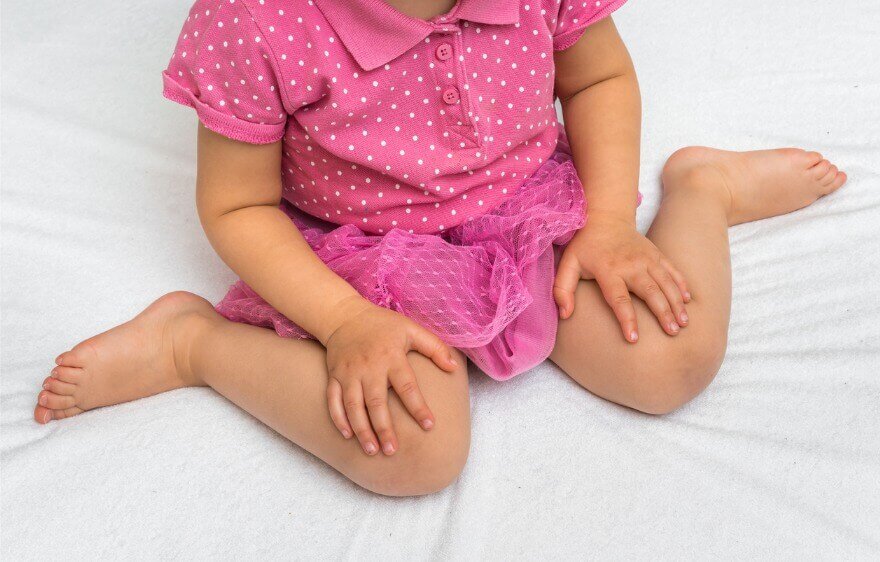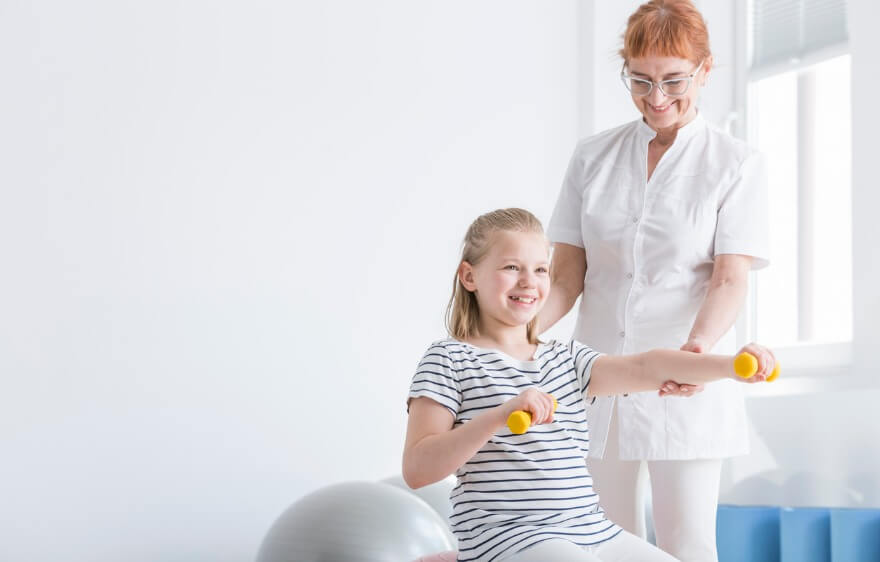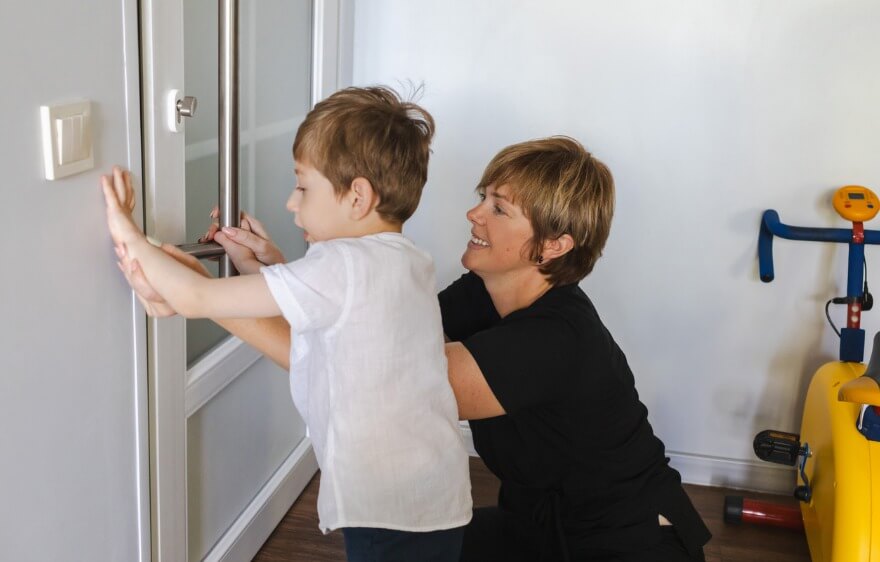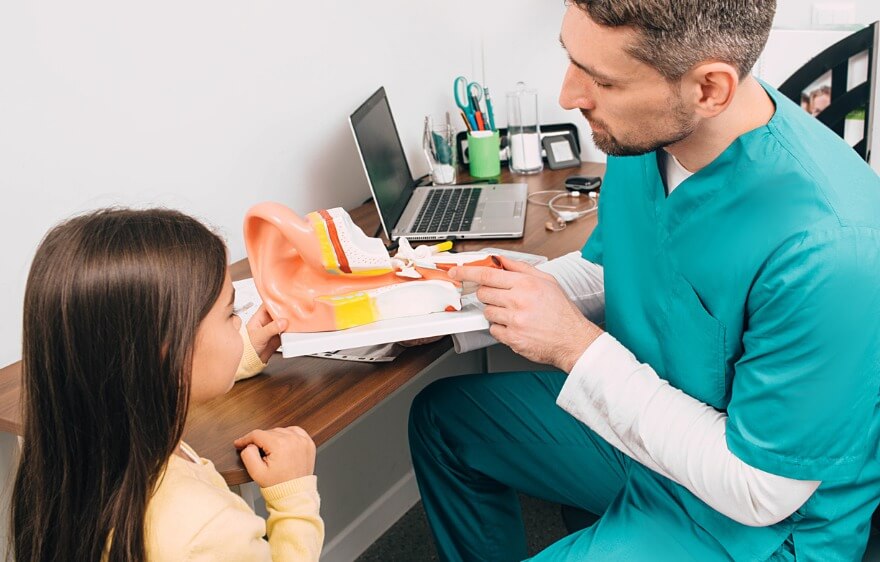If you’re a parent or caregiver, you’ve probably noticed your child sitting in various positions while playing, watching TV, or engaging in other activities. One of the more common — and sometimes concerning — sitting positions you might have observed is called “W sitting.” This position, where a child sits on the floor with their knees bent, legs splayed out to the sides, and feet tucked under their bottom, resembles the shape of the letter “W” when viewed from above. But is this position something to worry about?
In this post, we’ll explore what W sitting is, whether it’s something to be concerned about, and how occupational therapy can help if necessary.
What is W Sitting?
W sitting is a position commonly adopted by young children, particularly toddlers and preschoolers. In this position, the child’s legs form a W shape, with their knees bent and feet positioned outside their hips. While it may seem like just another way for kids to sit comfortably, W sitting can have some implications for their development.
Is W Sitting Bad?
So, is W sitting bad for your child? The short answer is: it depends. W sitting is a natural position for many children, especially those with flexible joints, but it can pose some risks if it becomes a child’s go-to sitting posture. While occasional W sitting is typically harmless, consistently using this position can lead to potential developmental issues.
The key concern with W sitting is that it can limit the development of core strength and stability, affect coordination, and even influence posture and alignment as a child grows. The good news is that by understanding these potential risks and taking proactive steps, you can help ensure your child develops strong, healthy movement patterns.
Potential Risks of W Sitting
W sitting isn’t inherently dangerous, but when it becomes a habitual sitting posture, it can contribute to several developmental challenges. Here are some potential risks associated with W sitting:
- Delayed Development of Core Strength: Core strength is crucial for many aspects of a child’s physical development, including balance, coordination, and posture. When a child sits in the W position, they rely on the stability provided by the floor and their legs, which can limit the activation and strengthening of their core muscles. Over time, this may lead to weaker core muscles, which can affect their ability to perform tasks that require balance and coordination, such as running, jumping, and climbing.
- Impact on Hip and Leg Muscle Development: W sitting places a lot of stress on the hips, knees, and ankles, as it requires extreme internal rotation of the thighs. This can lead to tightness in certain muscle groups, particularly the hip flexors and internal rotators, and weakness in others, like the hip abductors and external rotators. Over time, this muscle imbalance can contribute to poor posture and difficulties with activities that require a full range of motion in the hips, such as walking, running, or participating in sports.
- Effect on Coordination and Motor Skills: Children who frequently sit in the W position may be less likely to engage in movements that require crossing the midline of their body. For example, reaching across their body with their arms or legs. Crossing the midline is important for developing bilateral coordination — the ability to use both sides of the body together in a coordinated way. Without regular opportunities to cross the midline, a child may struggle with tasks that require coordinated movements, such as tying shoelaces, cutting with scissors, or writing.
- Potential for Long-Term Postural Issues: While occasional W sitting isn’t likely to cause long-term problems, habitual use of this position can contribute to postural issues as a child grows. For example, it may lead to increased lumbar lordosis, which is excessive inward curvature of the lower back, knock knees, where the knees angle in and touch each other when standing, or in-toeing, where the feet turn inward when walking. These postural deviations can affect a child’s gait and overall movement patterns, potentially leading to discomfort or injury as they get older.
How Occupational Therapy Can Help
If you’re concerned about your child’s W sitting or notice that it’s becoming their preferred sitting position, pediatric occupational therapy (OT) can be a valuable resource. OT is designed to help children develop the physical, cognitive, and sensory skills they need to perform everyday activities and reach developmental milestones. Here’s how OT can help address the issues associated with W sitting:
- Strengthening Core Muscles: One of the primary goals of occupational therapy for children who frequently W sit is to strengthen their core muscles. Therapists use a variety of fun and engaging activities to target the muscles of the abdomen, back, and pelvis, which are essential for stability and movement. For example, they might encourage your child to play games that involve balancing on an exercise ball, participating in obstacle courses, or engaging in tummy time to build core strength.
- Improving Hip and Leg Mobility: Occupational therapists can also work with your child to improve hip and leg mobility by stretching tight muscles and strengthening weak ones. Activities like yoga, stretching exercises, and playing in different positions, such as sitting cross-legged or kneeling, can help promote a balanced range of motion in the hips and legs. This not only reduces the likelihood of postural issues but also supports better overall movement patterns.
- Enhancing Coordination and Bilateral Integration: To address potential coordination challenges, occupational therapists often incorporate activities that encourage crossing the midline and using both sides of the body together. These might include games that require reaching across the body, such as passing a ball from one hand to the other, or activities like drawing or writing that promote the use of both hands in a coordinated way. These exercises help improve bilateral integration and support the development of fine and gross motor skills.
- Promoting Alternative Sitting Positions: In addition to addressing the physical aspects of W sitting, occupational therapists can help your child explore and adopt alternative sitting positions that promote better posture and muscle use. This might include sitting cross-legged, in a “long sit” position with legs extended, or in a “side sit” with legs bent to one side. By encouraging variety in sitting positions, therapists can help prevent the development of muscle imbalances and support overall physical development.
Encouraging Healthy Sitting Habits at Home
While occupational therapy can provide targeted support, there are also things you can do at home to encourage healthier sitting habits for your child. Here are a few tips:
- Encourage Variety: Encourage your child to sit in different positions throughout the day. For example, they can try sitting cross-legged, kneeling, or in a long sit position with their legs extended in front of them.
- Promote Active Play: Active play that involves running, jumping, climbing, and balancing helps strengthen core muscles and supports overall physical development.
- Use Floor Time Wisely: When your child is playing on the floor, encourage them to use different positions to engage with their toys. You can even make it a game to see how many different ways they can sit!
- Provide Support: If your child struggles to sit comfortably in other positions, provide support with cushions or bolsters to help them maintain a more neutral posture.
Caring for a Child with W Sitting
W sitting is a common position that many children adopt, especially during their early years. While it’s not necessarily a cause for alarm, it’s important to be aware of the potential risks associated with habitual W sitting and take steps to encourage healthier sitting habits. By understanding the implications of W sitting and seeking support from occupational therapy if needed, you can help your child develop the strength, coordination, and posture they need to thrive.
If you’re ever in doubt about your child’s sitting habits or physical development, don’t hesitate to reach out to a pediatric occupational therapist. Our therapists are here to provide guidance, support, and targeted interventions to ensure your child’s development stays on track. Remember, a little proactive care can go a long way in supporting your child’s health and well-being!
Schedule Your Child’s Care Assessment Today
At Care Options for Kids, we understand the unique challenges of caring for a child with health conditions. Our dedicated team of pediatric home health nurses is here to support your family with compassionate, expert care tailored to your child’s needs. Contact us today to schedule an assessment and learn how we can help you navigate this journey with confidence and care.
Click here to start your journey to better care.
This post is for educational and informational purposes only. You should always speak with your own therapist before implementing this information on your own.






